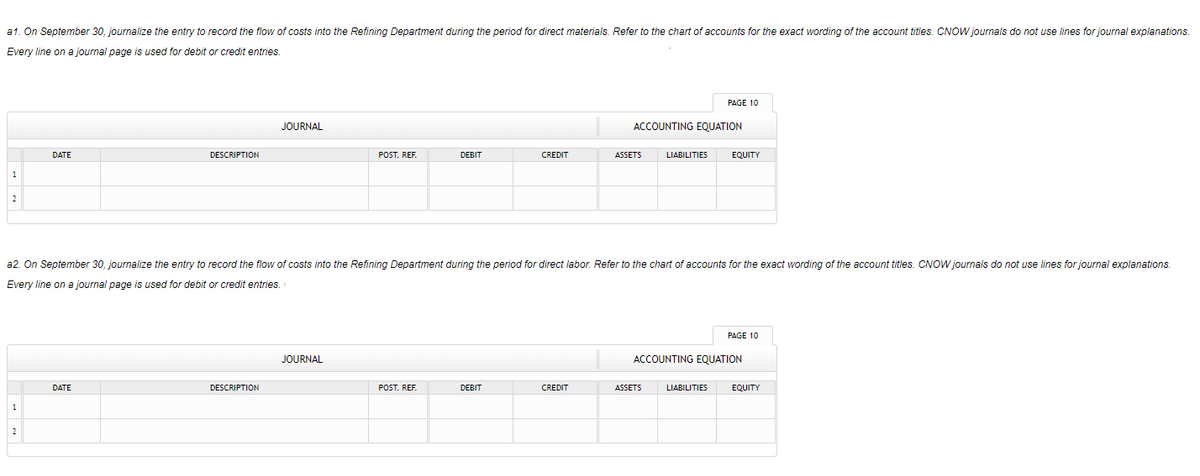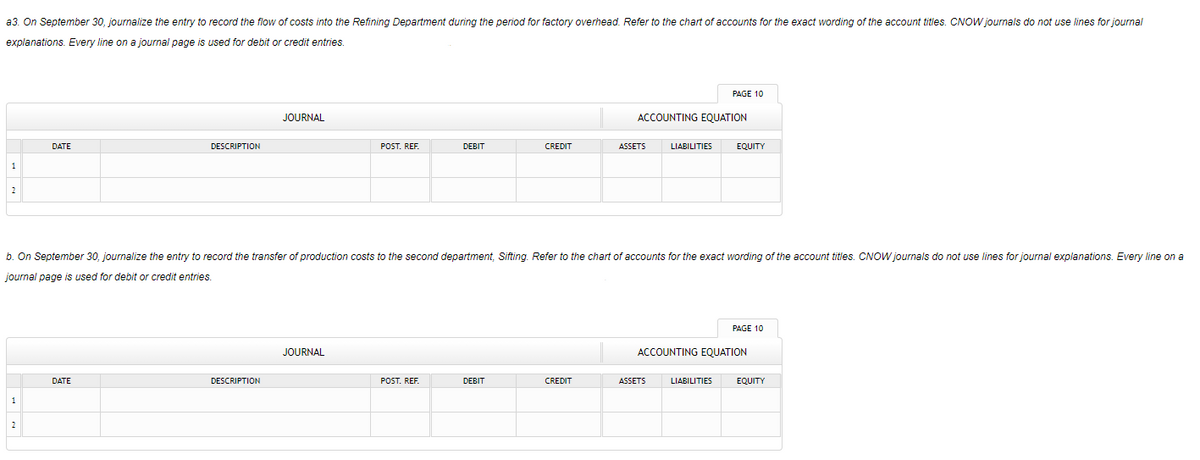Sweeties, Inc., manufactures a sugar product by a continuous process involving three production departments—Refining, Sifting, and Packing. Assume that records indicate that direct materials, direct labor, and applied factory overhead for the first department, Refining, were $371,000, $142,000, and $98,400, respectively. Also, work in process in the Refining Department at the beginning of the period totaled $29,200, and work in process at the end of the period totaled $28,400. Required: a. 1. On September 30, journalize the entry to record the flow of costs into the Refining Department during the period for direct materials.* 2. On September 30, journalize the entry to record the flow of costs into the Refining Department during the period for direct labor.* 3. On September 30, journalize the entry to record the flow of costs into the Refining Department during the period for factory overhead.* b. On September 30, journalize the entry to record the transfer of production costs to the second department, Sifting.*
Process Costing
Process costing is a sort of operation costing which is employed to determine the value of a product at each process or stage of producing process, applicable where goods produced from a series of continuous operations or procedure.
Job Costing
Job costing is adhesive costs of each and every job involved in the production processes. It is an accounting measure. It is a method which determines the cost of specific jobs, which are performed according to the consumer’s specifications. Job costing is possible only in businesses where the production is done as per the customer’s requirement. For example, some customers order to manufacture furniture as per their needs.
ABC Costing
Cost Accounting is a form of managerial accounting that helps the company in assessing the total variable cost so as to compute the cost of production. Cost accounting is generally used by the management so as to ensure better decision-making. In comparison to financial accounting, cost accounting has to follow a set standard ad can be used flexibly by the management as per their needs. The types of Cost Accounting include – Lean Accounting, Standard Costing, Marginal Costing and Activity Based Costing.
| a. |
|
||||||
| b. | On September 30, journalize the entry to record the transfer of production costs to the second department, Sifting.* | ||||||


Trending now
This is a popular solution!
Step by step
Solved in 5 steps


